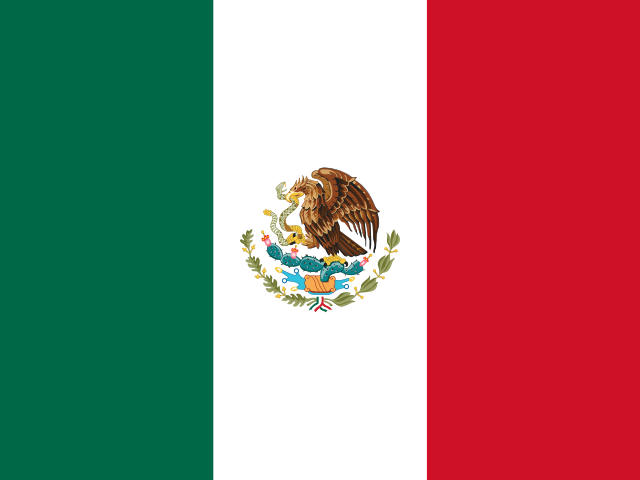
Mexico
Traditional news brands remain highly influential in Mexico, which ranks third in attention to legacy media and journalists on social media platforms. However, strong brands like Televisa and TV Azteca co-exist alongside a thriving, personality-led ecosystem in a country where almost two-thirds get news from social media weekly and more than 40% say it is their main source of news. The list of most mentioned individuals reflects a hybrid creator ecosystem that combines a number of well-known legacy anchors and investigative journalists who have defined Mexican television for decades, alongside pro-government YouTubers with loyal audiences and satirists who blur the line between politics and performance.
At the top of the list, Carmen Aristegui and Carlos Loret de Mola are both veteran journalists with an ongoing presence on traditional media who have also launched successful digital news companies. Aristegui’s investigative work on abuse of power has made her one of the country’s most recognised watchdogs. In addition to fronting a show on CNN en Español, she is also the face of Aristegui Noticias, an online news website she founded in 2012. Her morning news show Aristegui en Vivo is broadcast daily on her website and YouTube, as well as the website of La Octava (Grupo Radio Centro). Loret de Mola, a former Televisa anchor, hosts the radio programme Así las cosas on W Radio and is also a co-founder of the Mexico-focused, US-based digital news outlet Latinus, which was critical of the government of former president Andrés Manuel López Obrador’s (AMLO).
Mexico’s news creator landscape is also marked by the important role of politically aligned YouTubers. Especially notable is a group of creators who rose to prominence during the AMLO presidency, closely aligned with his Fourth Transformation (4T) movement. Their styles vary, from the rapid-fire takes of El Chapucero to El Charro Político’s more accessible, chat-style videos, but together they were an important part of AMLO’s digital ecosystem, defending policies, countering critics, and shaping the tone of online debate during a government that had a combative relationship with traditional media.
Mexico’s current president and AMLO’s successor, Claudia Sheinbaum, has generally taken a less hostile approach to the media than her predecessor but continues to give access to pro-4T YouTubers at press events such as the Mañaneras, a daily morning briefing, broadcast and streamed, which is often criticised for attempting to bypass the scrutiny of legacy media. These 4T-aligned influencers have not been without controversy: fact-checkers have documented cases where these channels spread misleading or false information, particularly during the pandemic.
Satire and entertainment also claim an important piece of the Mexican news creator landscape. Brozo, the clown persona of Víctor Trujillo, remains one of Mexico’s most recognisable political commentators, complete with a green wig, make-up, and a deliberately grotesque style that parodies the spectacle of politics itself. Meanwhile, infotainer Adela Micha, who caters to an audience interested in entertainment and celebrity news, and travel and lifestyle vlogger Luisito Comunica, both underscore how non-political influencers also occupy an important space in the region’s news creator scene.
Although far from parity, women have a stronger presence in the news creator landscape than in other Latin American countries analysed and are not constrained to the realm of entertainment as is often the case: three out of the four women on the list actively discuss or are directly involved in politics, including Sheinbaum, who is the country’s first woman president.
Proportion that regularly pay attention to creators/influencers in social and video networks
33%
(8/24)
Proportion that regularly pay attention to news brands/journalists in social and video networks
39%
(3/24)
Gender balance
11
out of the top 15 individuals are men
These lists represent the individuals most mentioned by respondents to our 2025 and 2024 Digital News Report surveys in the context of news and social media and video networks. Respondents who used Facebook, YouTube, X, Instagram, Snapchat or TikTok for news were asked where they paid most attention – including options for traditional news media/journalists, digital-first news outlets not associated with traditional media, creators/personalities who mostly focus on the news, creators/personalities who occasionally focus on the news. For each type, we asked respondents to name up to three examples of who they paid attention to. We then counted the individuals mostly using a tool called OpenRefine to help us use a semi-automated approach to clean the data (e.g. resolve misspellings or alternative names, remove duplicates etc.). In parallel, we also used ChatGPT5 to process and recode the original data, and to identify the most mentioned individuals to give us a way of comparing results. Further details on the tools we used and on small differences in methodology between 2024 and 2025 are provided in our methodology section.
Why did you use open fields rather than closed lists to collect the data?
We used open text response boxes, first, because in many countries the most popular news creators and influencers have not yet been identified by previous research. Second, because it would likely not be possible to fully capture the broad and fragmented nature of this ecosystem using a fixed listed of response options. And third, because we wanted to adopt an audience-centric approach whereby respondents could enter names that they considered news sources to them, even if they did not meet accepted standards or definitions within academia or the journalistic profession. This means that many of the names we list here would perhaps have been excluded under a more top-down approach.
How definitive is the order of the named individuals in each country?
In some cases, especially near the bottom the list, differences in the number of mentions for individuals are very small. Given our survey methodology, and the associated margin of error, the precise rank order should be read as indicative rather than definitive. Many other individuals were mentioned by respondents in the context of news, even if they do not make the top 15 using our approach. The lists should therefore be seen as indicative of some of the top news individuals in each country.
Why are some popular individuals with high follower counts lower down the list than individuals with high follower counts?
There are a number of possible reasons for this. First, some popular creators such as musicians and comedians are known more for entertainment than for news and their follower counts are often higher as a result. This means that even if they do occasionally talk about news related issues, not all of their followers will be aware of it. Second, some individuals working for traditional media may have relatively low personal followings but are widely distributed via social accounts of news brands. Third, there is a margin of error in surveys such as this (see previous answer) that needs to be borne in mind.
Did you exclude any individuals or other entries as part of the process?
Our lists are inclusive in terms of being faithful to the individual names mentioned by respondents. We removed just a handful of actors, sports stars, and celebrities if we were sure they did not post on any news-related issues. In most cases this did not affect the top 15 names that are published in this report for each country.
Many creators operate as part of collectives or use pseudonyms. How did you deal with these categorisation issues?
In terms of creator collectives or social-first brands, such as the Daily Wire (US) or TLDR News (UK) we followed the lead of our respondents. Where audiences have identified them as individuals, we have tended to categorise these as creators rather than news brands, but where they have mentioned a brand, we included them in our list of news brands. Where it was clear, however, that the brand is the work of one individual (e.g. Es.decirdiario/Sheila Hernández in Spain) we categorised them as an individual and made the connection clear in the description. Many creators use pseudonyms and, in these cases, we combined mentions of these with the real names. Again, we tried to make the connection clear in the description.
How did you deal with politicians and the overlap between politicians and political commentary?
Politicians and businesspeople are also frequently mentioned by survey respondents in the context of news sources on social media, and often have significant followings (e.g. on X, Donald Trump has 109m, Narendra Modi 109m, and Elon Musk 225m). Many politicians are also content creators and commentators who shape public debates. Some content creators have become politicians, and vice versa. We chose to include politicians if they were named by respondents in the context of news, but we have also shaded serving (or recently serving) politicians in grey to make clear the different relationship they often have with news consumers.

